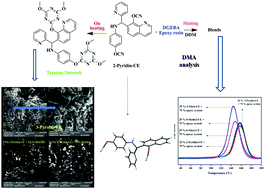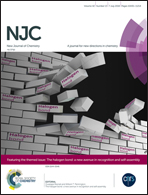Thermal and mechanical properties of epoxy blends with a dicyanate ester containing a quinoline moiety
Abstract
Dicyanate esters (CE) with a quinoline moiety were synthesized by treating bisphenols with cyanogen bromide in the presence of triethylamine and the structures were confirmed by FT-IR, and NMR spectral studies. The curing of the dicyanate esters was carried out by a conventional heating method and the curing mechanism has been investigated using FT-IR. The maximum curing temperatures of these cyanate esters are found to be in the range of 190–223 °C. Cyanate ester/epoxy blends were prepared. The thermal and mechanical properties of the blends were systemically investigated in detail through mechanical measurement [dynamic mechanical analysis (DMA)], scanning electron microscopy (SEM), and thermo-gravimetric analysis (TGA). TGA showed that the 10% weight loss temperature of all of the cured cyanate esters is above 284 °C. The char yield was found to be in the range of 52.67 to 61.14% and the flame retardancy of the cured cyanate esters was evaluated using the limiting oxygen index value, which is in the range of 38.57 to 41.95 at 700 °C. The cross-link density and glass transition temperature of the cyanate/epoxy ester blends were studied using dynamic mechanical analysis and the Tg was found to decrease with increasing cyanate ester content.



 Please wait while we load your content...
Please wait while we load your content...